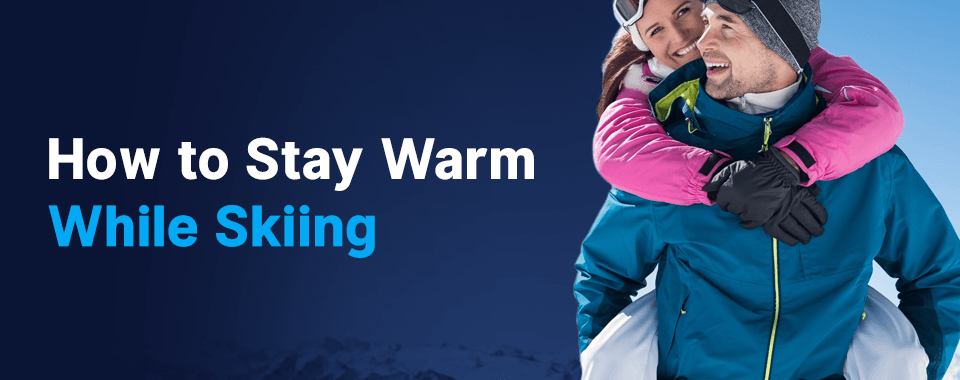 how to stay warm while skiing
how to stay warm while skiing
How to Stay Warm While Skiing
Posted
by
Matt Gahman
on Wednesday, November 24, 2021
Skiing is a classic winter activity. There are few things more invigorating than racing down a snowy slope in the middle of winter. It’s a fantastic challenge, and it helps you practice your coordination, determination and patience all at once. It gets you some exercise and fresh air even during the cold winter months, when so many other workouts might be off-limits. Best of all, it’s a lot of fun.
One less-than-ideal quality of skiing is how cold it can get. After all, you’re spending hours at a time out in the chilly snow and ice. The wind whips your face as you glide downhill, and even though you’re generating body heat to help yourself stay warm, it usually isn’t long at all before you start to feel the cold.
Keeping warm throughout a long day on the ski slopes is imperative for your health and your full enjoyment of this activity. If you're new to skiing, you might be wondering how to stay warm in the snow. To answer your questions about what to wear when you go skiing, we’ve put together this complete guide to staying warm on the slopes this year.
Top Tips for Staying Warm
Follow these tips, and you’ll be skiing to your heart’s content without having to stop and worry about the cold.
1. Layer Up
One of our best pieces of advice for keeping warm while skiing is dressing in layers. It isn’t enough to throw on warm outerwear, no matter how insulated or expensive it is. If you haven’t backed this up with suitable layers underneath, these outer layers can't do their job correctly.
Ideally, you’ll want to start with a thin base layer to wick sweat away from your body. Technical long-sleeved undershirts and leggings are an excellent choice. Avoid cotton for this base layer, as it holds the moisture against your skin, robbing your body of heat and leaving you cold and wet once your blood gets flowing and you start to sweat. Instead, opt for wool or a synthetic fabric that will move moisture away from your skin and keep you warm and dry.
For a mid-layer, try a lightweight fleece jacket or pullover that provides an extra layer of insulation without adding too much bulk. Finally, make your outer layer your waterproof/breathable coat — such as a shell jacket — plus your ski pants, helmet, mask, hat, gloves and any other accessories you might be packing.
2. Protect Your Extremities
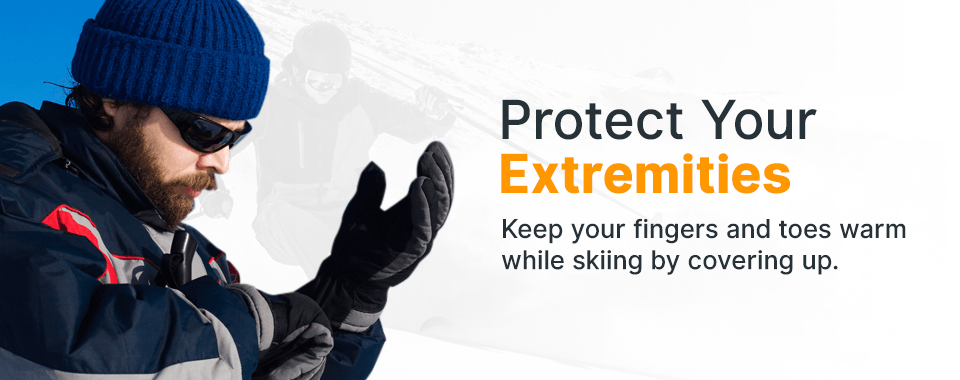
It’s easy to focus on the big-ticket outerwear items, such as coats and pants. However, you must also pay close attention to your extremities, since these are often the first place to begin suffering from the cold. Keep your fingers and toes warm while skiing by covering up. Take extra care to wear the right socks and well-insulated gloves or mittens. Don't forget to cover your head with a properly fitting helmet, combined with a neck gaiter or face mask.
3. Keep an Eye on the Temperature
It’s one thing to look at the thermometer, and another still to understand how that same temperature will feel when you’ve been outside in it for hours. Prepare for those extra cold days by bringing different layering options with you.
Another weather factor to consider is the wind chill, which makes the temperature feel far colder. Skiing downhill with the wind blowing in your face only amplifies the wind chill. Before you commit to hitting the slopes, make sure you check the forecasted temperature and wind chill to ensure you have all the gear for a safe day outdoors.
4. Make Sure Your Boots Fit
We mentioned that it’s critical to keep your extremities warm while skiing, which especially applies to your toes. Toes are prone to frostbite, and if you aren’t careful, you could be at risk. One of the easy preventive measures we recommend is wearing boots that give your toes a little bit of room to wiggle around and promote better blood flow. If your boots are too tight, your toes may end up getting cramped together, losing feeling and putting you at a higher risk for frostbite.
5. Bring Some Additional Warmers
When you’re out tearing up the slopes, you’ll want all the warmth you can get. If your coat has pockets, consider slipping a hand warmer or two in there. When you’re between runs, you can stick your hands in your pockets and soak up some of the extra warmth. You might also tuck these in your boots or gloves, depending on what type of equipment and clothing you have.
6. Close the Gaps
One of the best ways to keep yourself warm and protected from the cold is to minimize the amount of bare skin showing. This point may seem obvious, but many people neglect the tiny gaps between clothing layers. For example, if there's a little skin showing between your coat and your helmet, add a neck-up or other layer to cover this. Do your gloves not quite reach your coat sleeves? Make sure you wear gloves with long wrist cuffs. Look for a jacket with a powder skirt to help keep out wind and snow.
7. Think About Packing a Hot Snack or Drink

A thermos filled with soup or a hot drink or soup will warm you up from the inside out, helping you generate body heat that all your layers can then trap and hold.
While staying hydrated while exercising is essential, drinking cold water on the ski slopes will lower your core body temperature. To stay hydrated while still keeping warm, pack a hot beverage in a thermos. It won’t hydrate you quite as much as water will, but it will still do the trick, and it won’t freeze your insides in the process.
Dress in the Best for Maximum Cold Protection
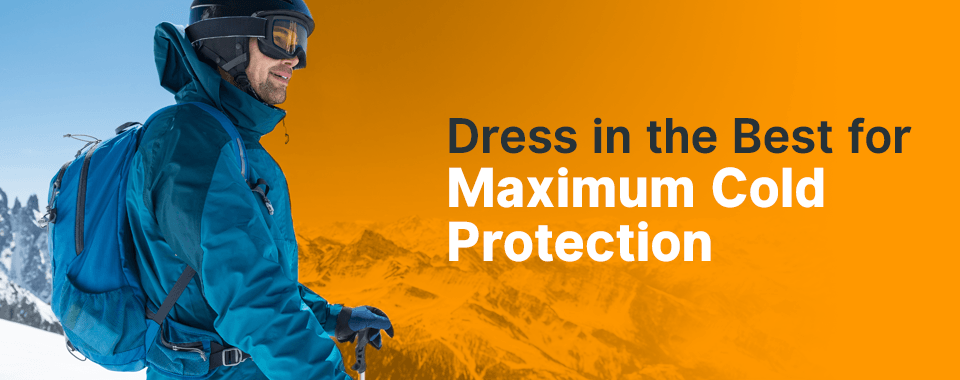
The single most crucial step you can take to protect yourself from the cold is to dress appropriately and not skimp on your cold-weather gear. Don’t just run out to the nearest department store and buy the cheapest thing on the rack or wear hand-me-downs that have lost what little insulation they had to begin with.
Instead, take the time and spend the money to purchase genuine, high-quality cold-weather gear. Think of these pieces as the investment they are. They’ll last for years, saving you the hassle of continually replacing lesser-quality items, all while giving you some of the best protection available.
Here are a few of the pieces worth investing in before your next big ski trip.
1. Your Base Layer
Wearing the appropriate base layer is the first step to keeping you warm. By design, this layer keeps you dry by wicking away the sweat from your body. The wrong base layer will leach heat away faster by trapping excess moisture next to your skin. To this end, here are some of the best brands for your consideration.
- Smartwool: For maximum warmth and dryness, we recommend investing in Smartwool. This brand offers long-sleeved undershirts and bottoms for men and women so you can build your entire base layer. These products consist of 100% merino wool for the warmest and driest possible fit and come in many different colors so you can choose your favorite shade. These base layer staple pieces, such as this gray tee, are the perfect choice to layer over on the slopes or for keeping cozy inside next to the fire.
- Under Armour: Another base layer that boasts exceptional warmth, Under Armour offers men’s and women’s crew-neck shirts and bottoms. They’re lightweight, helping you ward off the cold without bogging you down, and they’re moisture-wicking, keeping you from feeling damp or clammy. Under Armour pieces also protect against any odors. These black Base 3.0 leggings are a great example of the cold protection you’ll receive from Under Armour.
- Kari Traa: For a base layer that provides warmth and more of a design flair, try the Kari Traa line, named after designer and Olympic medalist Kari Traa. Each piece in this women's clothing line features 100% wool for excellent warmth and insulation. Enjoy the beautiful designs and express your personality with the different colors and patterns, such as these rose-printed mauve pants or these black-and-gray patterned pants, as well as either of the matching full bodysuits.
- Patagonia: With pieces for both men and women, Patagonia is a reliable brand that offers top-quality cold protection, shielding and insulation. Enjoy these functional and comfortable designs in crew-neck tees and leggings, such as these Capilene midweight bottoms for men.
2. Your Mid-Layer
These layers are a slightly heavier weight, though they're still flexible and lightweight. They’re more concerned with trapping body heat while simultaneously shielding you from the cold outside. Here are a few pieces and materials you might consider for this layer.
- Nils: This company makes various pieces for women. Nils offers everything from crew necks and partial zips to patterned leggings. These mid-layers tend to be slightly on the heavy side for added warmth. They’re also fleece-backed and body-hugging for maximum flexibility.
- Kuhl: Featuring jackets and vests for men and women, Kuhl makes an excellent choice for your mid-layer. They offer one of the highest levels of cold protection.
- Smartwool: Smartwool isn’t only an excellent choice for your base layer. You can build almost an entire cold-weather suit out of Smartwool, including your mid-layer.
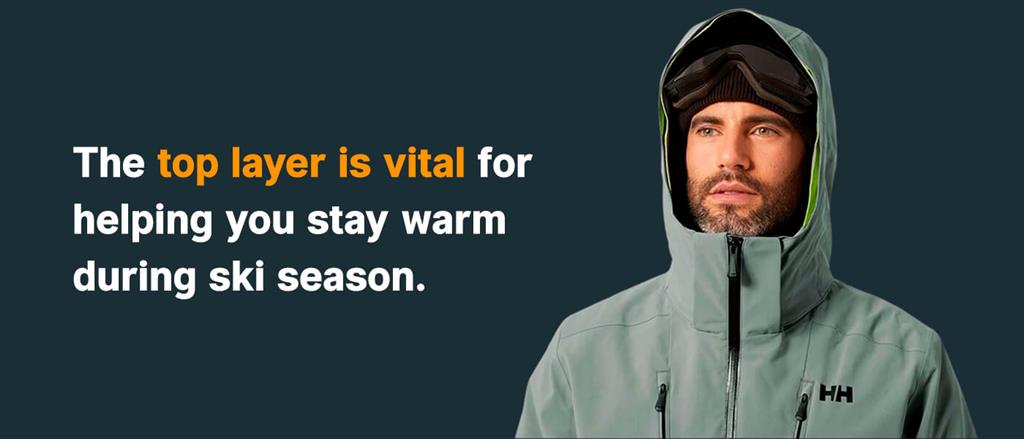
3. Top Jackets
The top layer is vital for helping you stay warm during ski season. While the lower layers help wick sweat off your skin and retain your body heat, the outer layer shields you from the wind and rain. Your top jacket should be breathable and waterproof for the ultimate protection. Here are some of the best brands offering top jackets for ski season.
- The North Face: The North Face has a well-deserved reputation for its top-quality winter jackets, offering engineered waterproof material and stylish designs. Try the North Face Women's Descendit Jacket, with a regular fit, hip-length cut and lightweight insulation for easier movement.
- Helly Hansen: Another good-quality brand for outer layers is Helly Hansen. The Helly Hansen Men's Alpha 3.0 Jacket is a bestseller thanks to its packed insulation, fitted design and specially designed pockets that help preserve phone battery life. For women, the Helly Hansen Women's Alphelia Jacket has maximum insulation for the coldest conditions, which does not compromise its fitted shape.
- Quicksilver: If you prefer a traditional fit, try the Quicksilver Men's Sycamore Jacket. It has a moderate amount of insulation to keep you warm while helping you stay mobile. It also offers a thumbhole to help you secure your sleeve to your hand.
- Roxy: Roxy offers some of the best jackets to stay warm in ski season. A mid-weight insulation choice for women is the Roxy Women's Presence Parka Jacket, which has a fixed hood and a thumbhole. Its regular fit will allow you to stack up plenty of layers underneath.
4. Top Ski Bibs
Another essential layer is the top ski bib, which provides added protection from the elements by extending above your waist. Top ski bibs for ski season keep snow and ice from getting between your other layers. The best bibs for ski season will help you stay warm and safe on the slopes. The North Face makes an ideal ski bib, available in men's and women's cuts.
- The North Face Women's Freedom Bib: The women's version comes with a standard fit and a mid-level amount of insulation. Its suspenders are adjustable to ensure a proper fit. It also has zipper vents to allow heat to escape as needed.
- The North Face Men's Freedom Bib: This bib for men also offers a standard fit and a mid-level amount of insulation. Along with its zipper vents, it also comes with side zippers to help you fit the leg over your boots.
5. Socks
Never underestimate the importance of high-quality ski socks! For the best protection, here are a few of the best ski socks for cold feet.
- Smartwool: The very warmest in socks, these are an absolute must-have for any avid skier or snowboarder. They wick moisture away while also protecting you from the cold. These are available in women’s designs and men’s designs. For slightly less heavy-duty socks, try the men’s ultralight sock and the women’s counterpart.
- Darn Tough: Another fantastic choice that ranks among the best for cold protection, Darn Tough socks come with a lifetime guarantee and feature a comfortable merino wool cushion in addition to their heat-preserving features.
- Heated: If you're looking for a little extra warmth in your toes, you might also try a heated sock, powered by rechargeable battery packs to help keep you toasty no matter where you go. Shop men's and women's styles.
6. Gloves
The hands are just as susceptible to frostbite as the feet, meaning it’s extra vital to take good care of them. The best way to keep your hands warm while skiing is with sturdy weatherproof gloves. Here are a few of our favorite recommendations.
- Hestra: One of the warmest and most functional choices available, Hestra designs men’s gloves to be extremely waterproof and warm while still allowing the mobility needed for the dexterous movements involved in skiing.
- The North Face: Known for their iconic jackets and pants, The North Face also makes high-quality mittens that can keep your hands protected even on the coldest of days. Try these women’s Montana Gore-Tex mittens and experience the difference.
- Gordini: Gordini gloves and mittens have a lot to offer, especially regarding flexibility and cold protection. In particular, the Gordini Challenge line features a sleek and effective design available for men and women.
- Marmot: One of Marmot’s top-selling gloves is the ever-popular Randonnee glove gauntlet. This style features a safety leash and a nose wipe while also providing the excellent insulation you would expect from a ski glove. Browse men’s and women’s styles to outfit your whole skiing party.
7. Accessories
You might have dressed yourself in the best of coats, zip-ups, tees, leggings, socks and gloves, but without the final finishing touches, your cold-weather outfit is incomplete. Here are a few of the additional things you should consider getting.
- Hats: Never underestimate the importance of keeping your head warm. Browse our extensive collection of men’s and women’s hats from brands like Pistil, The North Face, Patagonia and Smartwool, to name a few. For great unisex headgear, try the Seirus MagneMask Combo Clava. Another excellent headgear option is this Turtle Fur Micro Fur Ninja Mask.
- Extra layering gloves: Need an extra layer of warmth beneath your thicker gloves? Try these Smartwool merino gloves and see if they do the trick.
- Apres-ski boots: After you've spent a day hitting the slopes, you're going to need some footwear. Your snow boots give you traction while also keeping your toes cozy and warm. Try Dublin Apres Ski Boots for a waterproof suede-and-nylon construction. Whether you’re hitting the slopes or shoveling the driveway, these boots will do the trick.
Stay Warm and Safe This Winter
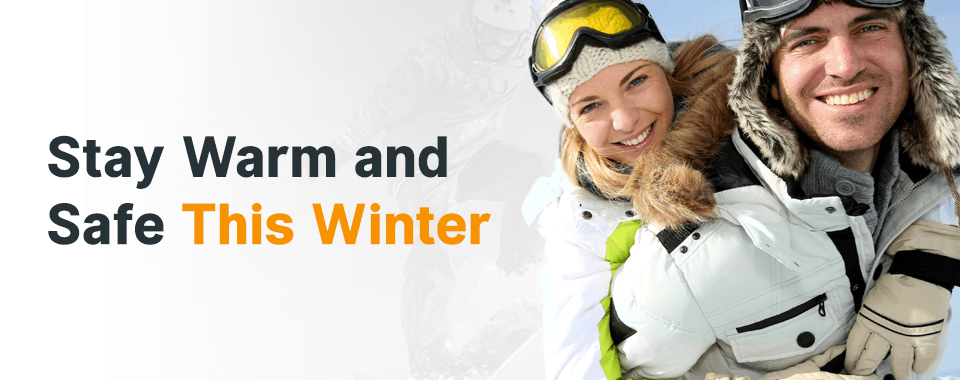
By incorporating a few of these pieces into your winter skiing wardrobe, you’ll already be well on your way to a warmer, safer and more enjoyable ski trip. Visit Buckman’s for all your skiwear needs. We offer only the best of the best. Stop by one of our seven Pennsylvania locations, or shop our full catalog online.
Categories:
Ski & Snowboarding Tips
|
Ski & Snowboard Apparel
Tagged: ski, ski and snowboard equipment